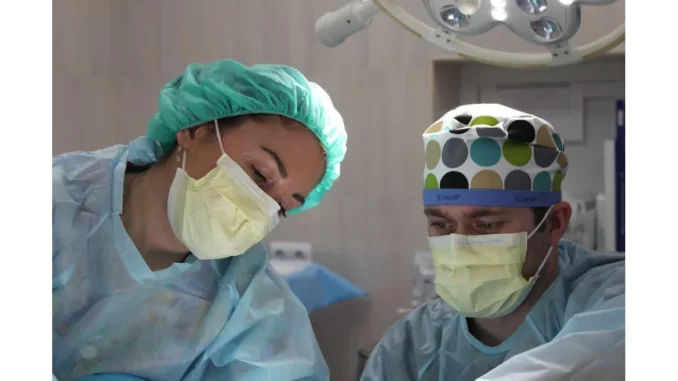
In the heart of bustling London, I had the privilege of engaging with Dr Emily Watson, a preeminent figure in haematology research, to explore the promising future of the neutropenia treatment sector. This discussion unfolded in light of a compelling forecast—a projected compound annual growth rate (CAGR) of 4.1% from 2024 to 2032. Dr Watson’s insights provided an enlightening perspective on the factors catalysing the advancement of this critical field.
Dr Watson began by shedding light on the often-overlooked condition of neutropenia. “Despite its low profile,” she noted, “neutropenia has a profound impact on patients, especially those undergoing chemotherapy.” Neutropenia, characterised by a dangerously low count of neutrophils—vital white blood cells responsible for warding off infections—poses significant risks that can derail treatment plans and compromise patient wellbeing. Dr Watson’s journey into this specialised field was sparked during her early medical training, where she witnessed the disruptive effects of neutropenia firsthand. “It’s not just about the numbers,” she emphasised, “it’s about quality of life. Patients face increased infection risks, leading to hospitalisations and treatment delays.”
As our discussion deepened, Dr Watson identified several factors propelling the growth of the neutropenia treatment industry. “Research and development efforts have intensified,” she explained. Pharmaceutical companies and academic institutions are making substantial investments to unravel the complex mechanisms of neutropenia and develop more effective therapies. Biotechnology advancements are at the forefront, with innovations such as biosimilars and novel biologics paving the way for new treatment options. These therapies aim to boost neutrophil production, reducing infection rates and severity in vulnerable patients.
The conversation naturally transitioned to the pivotal role of clinical trials in advancing neutropenia treatments. “Clinical trials are where the magic happens,” Dr Watson remarked, her passion evident. These trials are crucial in validating the efficacy and safety of new therapies. In recent years, efforts to streamline these processes have gained momentum, enabling quicker access to effective treatments. Dr Watson also highlighted the evolving regulatory landscape, describing it as both a challenge and an opportunity. Regulatory agencies are increasingly collaborative, working closely with researchers to expedite the delivery of promising therapies to patients. However, ensuring patient safety remains paramount, necessitating rigorous scrutiny throughout the approval process.
Economic factors also play a vital role in this burgeoning sector. Dr Watson acknowledged that the projected growth is not solely driven by scientific advancements. “There’s an economic component as well,” she noted. As the global population ages, the incidence of cancer and other chronic diseases is on the rise, expanding the patient pool requiring neutropenia treatment. This demographic shift underscores the need for continued innovation and investment in this field.
Our conversation took a more personal turn as Dr Watson reflected on her work’s human aspect. “Ultimately, it’s about the patients,” she stated. She recounted the poignant story of a young woman battling breast cancer who developed severe neutropenia, leading to a life-threatening infection and hospitalisation. “It was a stark reminder of why we do what we do,” Dr Watson reflected. The patient’s recovery, she noted, serves as a powerful motivation to push the boundaries of what is possible in medical research.
Before our meeting concluded, I asked Dr Watson about her outlook for the future of neutropenia treatments. “I’m optimistic,” she responded with conviction. The convergence of technological advancements, increased funding, and a deeper understanding of neutropenia is setting the stage for significant breakthroughs in patient care. As Dr Watson eloquently articulated, the anticipated growth rate represents more than just a statistic—it symbolises the potential for a future where neutropenia is no longer a silent adversary but a manageable condition, thanks to the dedicated efforts of researchers like herself.
In the complex tapestry of medical research, the neutropenia treatment industry emerges as a thread interwoven with hope and healing. Dr Watson’s insights illuminated the challenges and opportunities that lie ahead, painting a picture of a field poised for transformative growth. As we look towards 2032, the sector’s projected expansion is a testament to the relentless pursuit of improving patient outcomes, driven by innovation and compassion. The future holds promise, and the work of visionaries like Dr Emily Watson is bringing us closer to a world where neutropenia’s impact is significantly diminished.


Be the first to comment